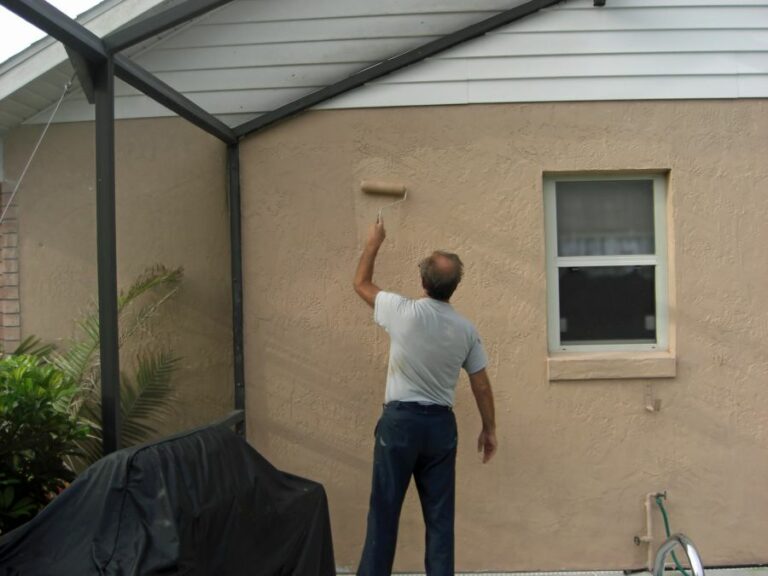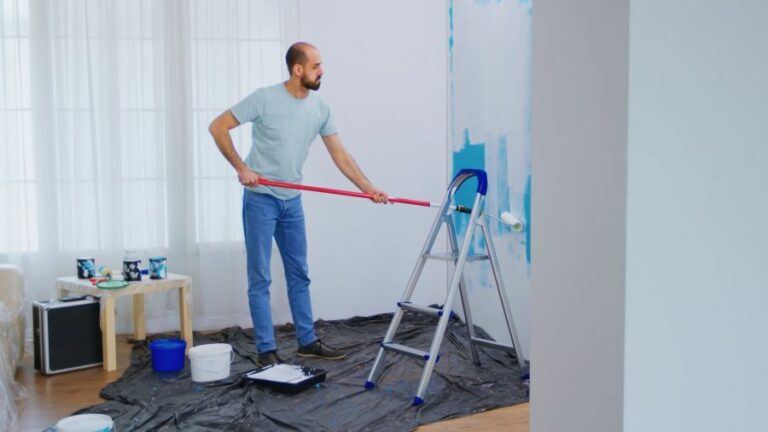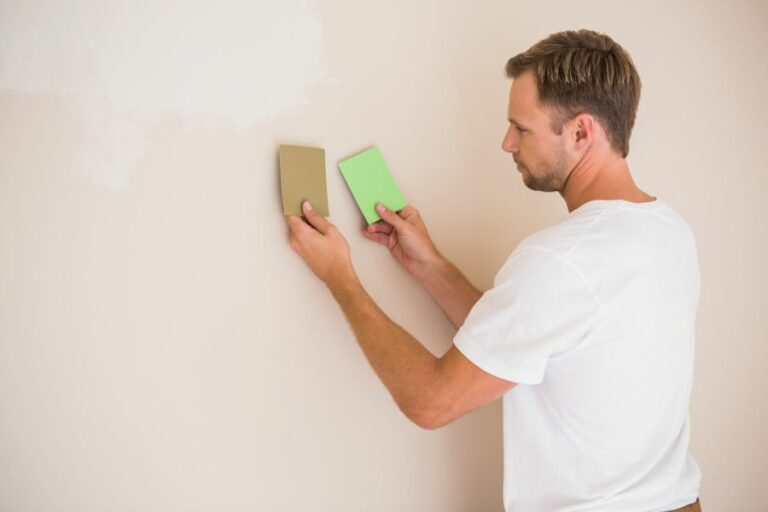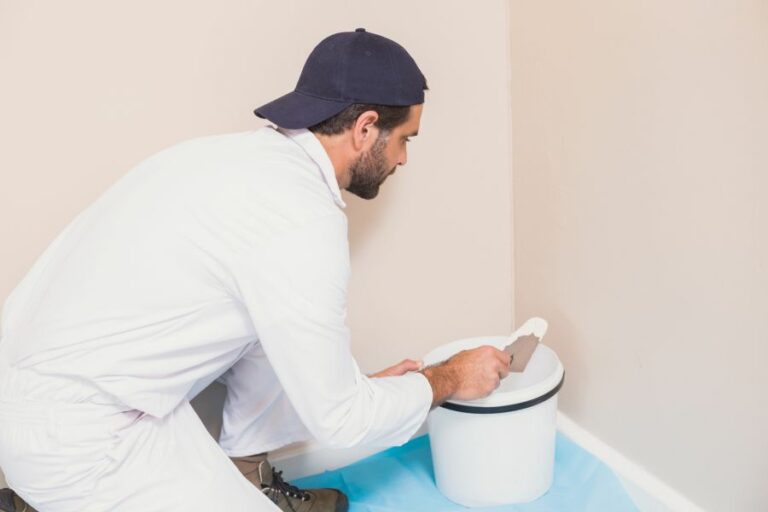Surface Preparation: Creating Suitable Conditions
When it comes to ensuring the success and durability of any project, surface preparation plays a critical role that cannot be overlooked. Establishing suitable conditions guarantees the effectiveness of the chosen material, ultimately leading to a longer-lasting and better-quality finish.
Surface preparation: creating suitable conditions:
Surface preparation is a crucial step for successful coating, painting, or adhesion applications as it ensures strong bonding and longevity of the final finish. It requires identifying the substrate material, thorough cleaning, creating ideal surface roughness, and conducting proper inspections and quality control for optimal adhesion and performance.

Dive in to discover the importance of surface preparation and its crucial role in creating suitable conditions for various applications. Unravel expert techniques, innovative solutions, and essential tips to maximize the efficiency and longevity of your projects. Keep reading for more insights!
Contents
- 1 Establishing Ideal Conditions for Surface Preparation
- 2 Ensuring Surface Suitability: Preparation Techniques
- 3 Key Considerations in Surface Preparation Planning
- 4 Exploring Various Surface Preparation Procedures
- 5 Comparing Methods for Surface Preparation in Repair Tasks
Establishing Ideal Conditions for Surface Preparation
• Importance of Surface Preparation
Surface preparation is a critical step in any type of coating, painting, or adhesion application process. It ensures the success and longevity of the desired finish by providing an ideal environment for the coating or adhesive to adhere to.
Proper surface preparation not only enhances the physical and mechanical bond between the applied material and the substrate but it also eliminates impurities that can compromise the final result.
Without proper surface preparation, the adhesion of the applied coating, paint, or adhesive can fail, resulting in poor aesthetics, corrosion, deterioration, and, ultimately, the need for costly rework.
• Identifying the Substrate
Before beginning the surface preparation process, it is crucial to identify the type of material that the substrate is made of. Common substrate materials include metals (such as steel, aluminum, and stainless steel), concrete, wood, and plastics.
Each material requires a specific approach for surface preparation, as different methods are more suitable for certain substrate types. Understanding the composition and characteristics of the substrate is essential to determine the appropriate surface preparation techniques.
For further information on substrate identification, the American Society for Testing and Materials (ASTM) offers various resources and standards for various materials.
• Cleaning the Surface
Prior to preparing the surface, it is important to clean it thoroughly to remove any contaminants, such as dirt, grease, or oil. Contaminants on the surface can impede the adhesion of the coating or adhesive, leading to a weak bond or premature failure.
First, clean the surface using a suitable solvent or degreasing agent to remove any grease or oil. Afterward, use a brush or a clean cloth to remove any dirt, dust, or loose particles.
In the case of metal substrates, cleaning the surface may also involve removing rust, corrosion products, or old paint. This can be accomplished through various methods, such as wire brushing, sanding, or grinding.
• Surface Roughness
Creating a rough surface profile is essential in many cases to ensure a strong bond between the coating or adhesive and the substrate. Surface roughness, often measured in terms of Ra (arithmetical mean deviation) or Rz (maximum peak-to-valley height), can be created using various methods such as:
1. Abrasive Blasting
Abrasive blasting (also known as sandblasting, shot blasting, or grit blasting) is the process of propelling an abrasive material at high velocity against the substrate, resulting in a roughened surface profile.
It is widely used for surface preparation, particularly for metal and concrete substrates. Abrasive blasting can be achieved using various methods, including:
- Dry abrasive blasting
- Wet abrasive blasting (water-based)
- Vacuum-assisted abrasive blasting
2. Mechanical Abrasion
Mechanical abrasion is the process of using physical forces to remove material from the surface and create the desired surface roughness. Common mechanical abrasion methods include:
- Sanding: Using sandpaper or a sanding machine to remove material from the surface and create a rough texture.
- Grinding: Using a grinding machine or an abrasive wheel to remove material from the surface and create a rough texture.
- Scarification: A combination of both sanding and grinding, scarification removes material from the surface using cutting tools, such as milling cutters or rotary discs, to create a rough texture.
3. Chemical Etching
Chemical etching is the process of applying a chemical solution to the substrate, which reacts with the surface material and creates a rough profile.
The process is commonly used for plastics and other non-metallic substrates. The choice of chemical etchant depends on the substrate material and the desired surface profile.
• Inspection and Quality Control
After surface preparation is complete, it is important to inspect the surface to ensure that it has been prepared according to the specified requirements. Surface inspections can include visual inspection, surface profile measurement, and cleanliness evaluation.
Visual inspection can be conducted to identify any remaining contaminants, surface defects, or uneven roughness. Surface profile measurement can be done using various methods, such as replica tape, profilometer, or surface roughness tester.
Cleanliness evaluation can include testing for residual contaminants, such as chloride, sulfate, or soluble salt, which may not be visible to the naked eye.
It’s important to follow the recommendations provided by the coating, paint, or adhesive manufacturer to ensure that the surface preparation process meets the requirements for optimal adhesion and performance.
• Conclusion
In conclusion, surface preparation is a critical factor in ensuring the success of any coating, painting, or adhesive application project.
By understanding the substrate material, selecting appropriate cleaning agents and surface roughening methods, and conducting thorough inspections and quality control, one can create a suitable surface for adhesion and achieve the desired result.
Proper surface preparation not only ensures strong adhesion and longevity of the final finish but also mitigates the risks of premature failure, costly rework, and poor aesthetics.
Ensuring Surface Suitability: Preparation Techniques
• Importance of Surface Preparation
Appropriate surface preparation is crucial to ensure that the substrate can adhere well to the applied coating, paint, or other finish.
Poor surface preparation can lead to peeling, flaking, and disbonding, which can cause significant damage and decrease the longevity of your applied finish. Therefore, taking time to thoroughly prepare the surface can ultimately save you money and time in the long run.
• Factors Affecting Surface Preparation
There are various factors that can influence the performance of your chosen coating or finish. Some of these factors include:
- Materials and environment
- Current surface conditions
- Application method
- Type of coating or surface treatment
– Materials and Environment
When choosing a surface preparation method, consider the materials that make up the surfaces and the environment they are in. Different materials can require different approaches to prevent unintended damage and ensure proper adhesion.
For instance, wood surfaces require different treatments than concrete surfaces. Furthermore, outdoor surfaces will need to withstand varying weather conditions, while indoor surfaces may require treatments that are resistant to everyday wear and tear.
– Current Surface Conditions
Another factor to consider is the current condition of the surface. Assess whether the surface has been previously coated, and if so, what type of coating was used. Also, inspect the surface for damage, such as cracks, chips, or stains, which will need to be addressed during the preparation process.
– Application Method
The choice of application method can also impact the required surface preparation. Some methods, like spraying or brush application, may require different preparation techniques than others. Research and choose the appropriate application method for your desired finish to ensure a successful outcome.
– Type of Coating or Surface Treatment
Finally, consider the type of coating or surface treatment you plan to apply. Some coatings may require specific surface preparation techniques, while others may be more forgiving. Ensure that you read and follow the manufacturer’s instructions when using a particular product.
• Surface Preparation Techniques
Here are six general surface preparation techniques that can be adapted to various types of surfaces:
- Cleaning
- Degreasing
- Stripping
- Acid etching
- Abrasive blasting
- Grinding
– Cleaning
Prior to any other prep work, thoroughly clean the surface to remove any dirt, dust, or debris. Use a broom, vacuum, or air compressor to eliminate these surface contaminants. You can also use water and a mild detergent, followed by rinsing to ensure all dirt is removed.
– Degreasing
Surfaces, such as metals or concrete, often accumulate grease, oil, or other contaminants. Degreasing is essential to remove these substances that might prevent proper adhesion of the coating.
Use a commercial degreaser or a solution of trisodium phosphate (TSP) to clean the surface according to the product’s instructions.
– Stripping
If a previous coating needs to be removed, stripping is an effective technique. Various chemical strippers are available on the market, depending on the type of coating to be removed. Follow the manufacturer’s instructions for the best results.
– Acid Etching
Acid etching is a technique used on concrete surfaces to create a rough texture, allowing for better adhesion of the coating. Apply a concrete etching solution according to the manufacturer’s instructions and wait for the reaction to occur.
Acid etching can be hazardous and should be done with caution, using proper safety gear.
– Abrasive Blasting
Abrasive blasting is a method used to clean and profile surfaces using compressed air and abrasive media, such as sand or glass beads. Examples include sandblasting or bead blasting.
This technique can be effective in removing existing coatings, rust, and other contaminants while creating an appropriate surface profile. Be sure to wear appropriate safety equipment when conducting abrasive blasting.
– Grinding
Grinding uses power tools, such as angle grinders or floor grinders, to mechanically remove surface contaminants and create a suitable surface profile.
This method is especially useful for preparing concrete surfaces for coatings or repairs. Be careful when using power tools, and follow proper safety precautions.
• Conclusion
Taking the time to adequately prepare a surface is a crucial step in ensuring the longevity and success of your applied finish. Carefully consider the factors that impact surface preparation and choose the most appropriate techniques for your project.
Always follow the manufacturer’s instructions and prioritize safety when working with potentially hazardous materials or equipment. With proper surface preparation, you will ensure that your project looks professional, lasts for years to come, and offers the best possible protection for your surfaces.
| How do you prepare the surface to make sure it is suitable? |
|---|
| 1. Start by cleaning the surface to remove any dirt, grease, or debris. 2. If the surface is uneven, fill in any cracks, holes, or imperfections with a suitable filler and let it dry. 3. Sand the surface using fine-grit sandpaper to create a smooth, even base for painting or other applications. 4. Wipe down the surface again to remove any dust from sanding. 5. Apply a primer, if necessary, to ensure proper adhesion of paint or other materials. 6. Allow the primer to dry fully before proceeding with the application of paint or other materials. |
Key Considerations in Surface Preparation Planning
Proper surface preparation is crucial in any construction or renovation project, as it significantly affects the durability and effectiveness of the applied coatings, adhesives, or finishes.
• Surface Cleanliness
The first and foremost factor to consider is the cleanliness of the surface. It is vital to remove any dirt, dust, grease, or oil that might hinder adhesion or be trapped in the coating, which can lead to failure in the long run.
I recommend using appropriate cleaning agents and degreasers for specific surfaces, often provided by the coating or adhesive manufacturer.
• Surface Profile and Texture
The second factor to consider is the surface profile or texture. It is essential for proper adhesion and performance of coatings, adhesives, or finishes.
A smooth surface might require roughening or sanding to achieve the desired profile for better adhesion. On the other hand, an overly-rough surface might need to be smoothed or leveled.
Profiling methods vary from mechanical abrasion, like sandblasting or grinding, to chemical etching. It is crucial to ensure the chosen method is compatible with the substrate material and the coating or adhesive product.
• Surface Contaminants
Contamination on the surface might lead to adhesion failure or other issues regarding the application of coatings, adhesives, and finishes. Common contaminants include salts, moisture, and rust on metal surfaces or mold and mildew on wooden or concrete surfaces.
It is crucial to remove any contaminants using appropriate methods, such as desalination, rust removal, or mold treatment.
• Surface Moisture
The presence of moisture is an important factor to consider when preparing a surface. High moisture content can lead to adhesion issues, coating breakdown, or corrosion, especially in metal substrates.
Therefore, it is necessary to assess the surface’s moisture level before any application. While some products can tolerate a certain degree of moisture, it is generally advisable to work on a dry surface.
If required, consider using dehumidifiers, heating, or other drying methods to achieve the desired moisture level.
• Surface Compatibility
Compatibility between the surface material, the preparation method, and the product to be applied is crucial for successful adhesion and performance. Always consult the manufacturer’s guidelines, data sheets, and recommendations to ensure compatibility.
Incompatible materials may lead to adverse reactions, damage to the substrate, and overall poor performance of the applied product.
• Environmental Factors
The environment plays a significant role in the surface preparation process. Environmental factors such as temperature, humidity, and air quality can affect adhesion and overall performance.
I recommend adhering to the manufacturer’s guidelines relating to temperature and humidity and taking necessary precautions to maintain a controlled environment. It is also essential to protect the prepared surface from contaminants during and after the preparation process.
• Health and Safety
During surface preparation, it is essential to prioritize health and safety. Practitioners should follow appropriate safety guidelines, wear protective equipment, and ensure proper ventilation when working with hazardous materials.
Failure to do so could result in health risks to workers and negatively impact the project’s success.
• Conclusion
In conclusion, proper surface preparation is fundamental in ensuring the success of construction or renovation projects.
By carefully considering factors such as surface cleanliness, texture, contaminants, moisture, compatibility, environmental factors, and health and safety, it is possible to achieve optimum adhesion and overall performance of the applied coatings, adhesives, or finishes.
Remember to always consult the manufacturer’s guidelines, as well as any other professional standards or regulations applicable to your specific project. With appropriate preparation and attention to detail, you can ensure the longevity and effectiveness of your surface applications.
Exploring Various Surface Preparation Procedures
Surface preparation processes are essential techniques used in various industries to clean, modify, and enhance the properties of materials such as metals, concrete, plastics, and ceramics.
These treatments play a vital role in the manufacturing, coating, painting, and adhesive processes, significantly affecting the durability, performance, and functionality of the finished products.
• Types of Surface Preparation Processes
– Abrasive Blasting
Abrasive blasting, also known as sandblasting or grit blasting, involves directing a stream of abrasive particles under high pressure or high velocity onto the material’s surface.
This technique efficiently removes surface contaminants, such as rust, paint, and grease, while also providing a consistent anchor pattern for coatings or adhesives.
Advantages
- Removes stubborn contaminants and coatings.
- Creates a uniform profile on the surface, ensuring proper adhesion of coatings.
- Applicable to various materials and surface geometries.
Disadvantages
- Can generate dust and noise, resulting in environmental and health concerns.
- Requires proper containment and disposal of used abrasives and contaminants.
- May alter the material’s surface properties, leading to stress corrosion or reduced fatigue strength.
– Chemical Cleaning
Chemical cleaning uses solvents, alkaline solutions, acids, or other specialty chemicals to dissolve and remove contaminants from the surface. This technique is often applied in industries such as metal processing, automotive painting, and electronic device manufacturing.
Advantages of Chemical Cleaning
- Efficiently removes a wide range of contaminants, including organic residues, heavy metals, and chalking.
- Enables precision cleaning, targeting specific contaminants with minimal impact on the material surface.
- Requires less manual labor compared to mechanical cleaning methods.
Disadvantages of Chemical Cleaning
- Generates hazardous byproducts that need proper treatment and disposal.
- May cause adverse chemical reactions, leading to material degradation or environmental hazards.
- Prolonged exposure to chemicals can pose health risks to workers.
– Mechanical Cleaning
Mechanical cleaning employs the use of manual or automated tools, such as wire brushes, scrapers, abrasive pads, and grinding wheels, to physically remove contaminants or modify the surface. This method is commonly used in construction, shipbuilding, and automotive repair industries.
Advantages of Mechanical Cleaning
- Rapidly removes surface contaminants and coatings.
- Applicable to various materials, scales, and geometries.
- Lower costs compared to other advanced methods.
Disadvantages of Mechanical Cleaning
- Limited effectiveness in removing deeply embedded contaminants.
- May cause excessive material removal or uneven surface profile.
- High labor requirements, especially for large-scale projects.
– Laser Ablation
Laser ablation uses a high-energy laser beam to remove contaminants, coatings, or unwanted layers of material from the surface. This non-contact method is highly precise and capable of selectively cleaning complex geometries and sensitive materials without causing damage.
Advantages of Laser Ablation
- Precise and selective cleaning, targeting specific contaminants without damaging the underlying material.
- Non-contact process eliminates mechanical stress and reduces the risk of cross-contamination.
- Environmentally friendly alternative to chemical and abrasive cleaning methods.
Disadvantages of Laser Ablation
- Higher initial costs and maintenance requirements.
- Limited effectiveness in removing thick or tenacious coatings.
- May require a gas or liquid medium to remove vaporized contaminants.
• Factors to Consider When Choosing a Surface Preparation Method
- Material: Different preparation methods may be more effective or suitable for specific materials. It is important to consider the material’s chemical and physical properties, thermal stability, and sensitivity to mechanical stress.
- Application: The end-use environment, required surface profile, and adhesion requirements can affect the choice of surface preparation techniques. For instance, aerospace and automotive components need more precise and controlled methods due to stringent quality standards.
- Contamination Level: The type, size, and concentration of contaminants dictate the selection of appropriate cleaning techniques. Abrasive blasting is beneficial for heavy rust and scale removal, whereas chemical cleaning is better suited for organic residues and light oxidation.
- Cost and Time: Balancing the costs of equipment, maintenance, and labor against the benefits of faster and more effective cleaning methods is crucial.
- Environmental and Health Concerns: Selecting environmentally friendly and safe processes, minimizing the generation of hazardous byproducts, and ensuring worker safety are imperative.
In conclusion, effective surface preparation processes help improve product performance, extend service life, and reduce maintenance costs. The choice of the most appropriate method is dependent on the materials, contaminants, application requirements, and economic considerations.
Proper implementation of these methods, coupled with adequate process control and quality assurance measures, can ensure superior product quality and longevity.
Process | Description |
|---|---|
Cleaning | Removing dirt, grease, and other contaminants from the surface. |
Abrasive Blasting | Using high-pressure air and abrasive particles to clean and roughen the surface. |
Chemical Treatment | Applying chemical solutions to modify or react with the surface, such as etching or conversion coating. |
Mechanical Abrasion | Using tools or machinery to physically abrade the surface, like sanding, grinding, or polishing. |
Heat Treatment | Applying heat to alter the surface properties, such as annealing, tempering, or flame cleaning. |
Surface Conditioning | Examples include phosphating or chromating, which provide better surface adhesion for coatings. |
Comparing Methods for Surface Preparation in Repair Tasks
Surface preparation is a critical and essential step for successful repair work. It is the process of readying the surfaces of materials, structures, or components for repair by cleaning, removing, or altering them in some way.
• Mechanical Surface Preparation Methods
– Abrasive Blasting
Abrasive blasting is a highly effective method to clean and roughen surfaces for a variety of repair work applications. Including removing old paint, contaminants, rust, and corrosion from metal surfaces. Steel shot, steel grit, or sand are common abrasive media for this process.
I recommend using abrasive blasting for projects requiring deep cleaning, especially on surfaces with heavy buildup or coatings, such as industrial machinery, metal structures, and storage tanks.
– Grinding and Sanding
Grinding and sanding can both be used for surface preparation on hard surfaces like metal, concrete, and wood. There are various types of grinding and sanding machines available, ranging from handheld devices to large, walk-behind machines.
I recommend grinding to remove thick coatings and high spots, smoothing rough concrete, and reducing high levels of surface laitance. Sanding is best suited for wood surfaces, where it can be used to remove paint, varnish, and stains.
– Wire Brushing
Wire brushing is a simple, inexpensive, and portable method for removing loose paint, rust, and scale from metal surfaces. Both manual and power wire brushes are available.
I recommend using wire brushing for smaller projects or when more aggressive surface preparation methods are not feasible. However, it may not be suitable for heavily corroded or coated surfaces, as it can be time-consuming and labor-intensive.
• Chemical Surface Preparation Methods
– Acids and Alkaline Cleaners
Acids and alkaline cleaners can be used to dissolve and remove contaminants from metal and concrete surfaces. They can also be used to etch and roughen surfaces for better adhesion of repair materials.
I recommend using a reputable manufacturer’s cleaner or etchant, as they are specially formulated to provide consistent and effective results. Always follow the manufacturer’s directions for use, and be sure to neutralize and rinse the surface after using an acid or alkaline cleaner.
– Paint Strippers
Paint strippers are chemical solutions designed to remove paint and other coatings from surfaces. Depending on the formulation, they might be used on wood, metal, and masonry surfaces.
I recommend using paint strippers for projects where mechanical methods might damage the surface or are not feasible. Be sure to use a paint stripper that is specifically formulated for the type of surface you are working on, and follow all safety precautions on the label.
• Thermal Surface Preparation Methods
– Flame and Plasma Cleaning
Flame and plasma cleaning involves the use of high temperatures to remove contaminants and coatings from metal surfaces.
Flame cleaning uses a torch to heat the surface, causing paint and other impurities to burn off. Plasma cleaning, a more advanced technique, uses an electric arc to generate a high-temperature plasma that can be used to clean and modify surfaces.
I recommend considering flame and plasma cleaning for large metal surfaces, such as steel plates, girders, or pipelines. Keep in mind that these processes can generate potentially harmful fumes, so adequate ventilation and personal protective equipment must be used.
– Heat Guns and Infrared Paint Removers
Heat guns and infrared paint removers are both effective methods for softening and removing paint from wood surfaces. Heat guns use a stream of hot air to soften the paint, while infrared paint removers use infrared heat to accomplish the same task without direct contact with the surface.
I recommend using heat guns and infrared paint removers for delicate or historic wood surfaces, where mechanical and chemical methods might damage the material or leave residue behind.
In conclusion, proper surface preparation is a crucial step in ensuring successful repair work. The choice of method depends on several factors, including the material of the surface, the type and level of contaminants, and specific project requirements.
Always ensure the chosen method is appropriate for the job, and follow all necessary safety precautions during the surface preparation process.
Method | Description |
|---|---|
Cleaning | Removal of dirt, grease, oil, and other contaminants from the surface; includes pressure washing, steam cleaning, and chemical cleaning. |
Grinding | Use of abrasive tools to remove surface imperfections, unevenness, and coatings; includes sanding, wire brushing, and abrasive blasting. |
Scarification | Use of mechanical equipment to remove weak, damaged, or deteriorated surface layers; includes milling, planing, and scabbling. |
Acid etching | Application of acid solutions to open up the surface pores and remove surface contaminants; mainly used for concrete surface preparation. |
Water jetting | Use of high-pressure water to remove loose debris, contaminants, and coatings from the surface; can be used for both concrete and metal surfaces. |
Shot blasting | Use of a machine that propels small steel beads or shot at the surface, removing contaminants, and creating a rough surface for improved adhesion; primarily used on concrete and metal surfaces. |
Ultrasonic impact treatment (UIT) | Use of ultrasonic pulses to generate compressive residual stresses in the surface, enhancing the fatigue strength of welded structures and improving crack resistance. |
Laser ablation | Use of a high-powered laser beam to vaporize surface contaminants and imperfections, leaving a clean and smooth surface behind. |







